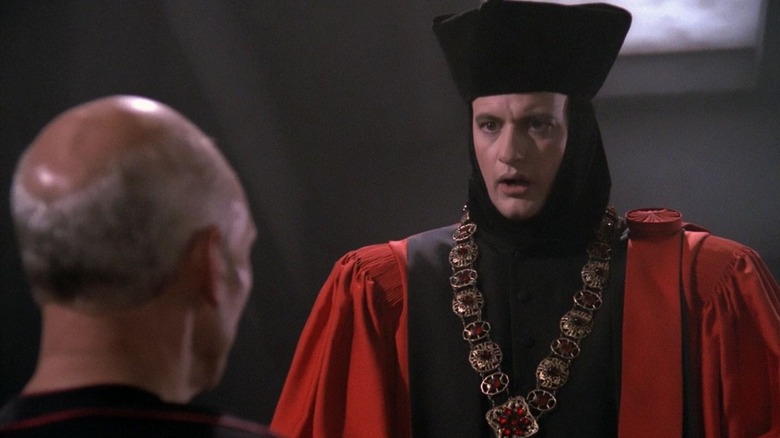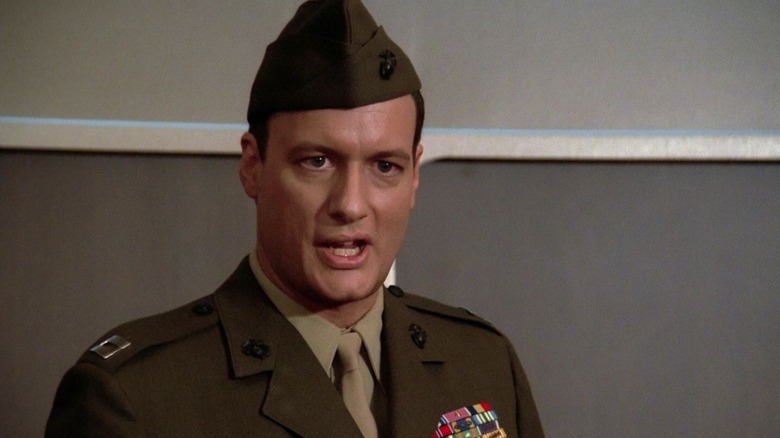Creating Q, the trickster god who first appeared in Star Trek: The Next Generation, It was not born entirely out of creative necessity. Apparently back in 1986, when “The Next Generation” was still in development, there was some debate over whether the pilot episode – called “Encounter at Farpoint” – would be an hour, 90 minutes, or a full two hours long. If the show is 90 minutes long, a negotiated rate will be paid to broadcast writer DC Fontana. If it’s 2 hours, you’ll get a bonus.
Show creator Gene Roddenberry encouraged Fontana to keep the “Farpoint” script to 90 minutes, and she gladly complied. But then, without working with Fontana, Roddenberry swooped in and wrote an additional 30 minutes of “book-end material” for the episode, expanding it to two hours. The “book-end material” were actually all the scenes involving Q (John de Lancie, Who almost didn’t get the role). Roddenberry, because he was now co-author of Farpoint, received the aforementioned bonus, and Fontana did not.
However, Q became a fan favorite, as the omnipotent cosmic brat serving as an eccentric counterpoint to the well-behaved, understated “Next Generation” characters. Q returned several times during the series, usually once or maybe twice a season, to play tricks on Captain Picard (Patrick Stewart) and the crew of the Enterprise. Although he was invented for mercenary purposes, Q ended up becoming an invaluable part of the “Star Trek” franchise.
But Roddenberry didn’t want Q to be overexposed. It seems that a little Q goes a long way. At the 2024 pop culture conference called VirtualCon5 (event Covered by ScreenRant), de Lancie recalls talking with Roddenberry about Q, and how the show’s creator felt that too much Q would make him seem mundane and unthreatening. Roddenberry didn’t want Q to be a clown.
Gene Roddenberry didn’t want Q to be seen as a clown
De Lancie’s performance as Q is one for the ages, combining indescribable cosmic menace with hilariously charismatic humour. The character was so popular, he even had guest spots on “Star Trek: Deep Space Nine” and “Star Trek: Voyager” as well. Q also played a major role in the second season of “Star Trek: Picard” just a few years ago. When de Lancie filmed “Encounter at Farpoint,”“It seemed obvious that he would return frequently. But, as Roddenberry reiterated, seeing Q so often would turn him into Great Gazoo from The Flintstones. De Lancie recalls:
“I came, and I’m spinning. So the second time they brought me in, Gene said, ‘You know what?’ I won’t bring you back more than once a year. Because it occurred to us that ‘we’re going to do this next.’ We have a show where we wait for the clown to show up.”
Sure, Q was a comedic character, always doing something weird with his godly powers — like transporting “Star Trek” characters into the world of Robin Hood — but he was never a clown. However, the post-religious characters in Star Trek merely rejected his claims to divinity, viewing him as more of a nuisance than a threat. The fact that he came back infrequently let Trekkies know he was special.
Q died at the end of Season 2 of “Picard,” but he exists outside of linear time, so he’s still alive, too. Time will tell if he returns.
Source link
https://www.slashfilm.com/img/gallery/star-treks-gene-roddenberry-wanted-to-avoid-one-thing-with-john-de-lancies-q/l-intro-1733795858.jpg

